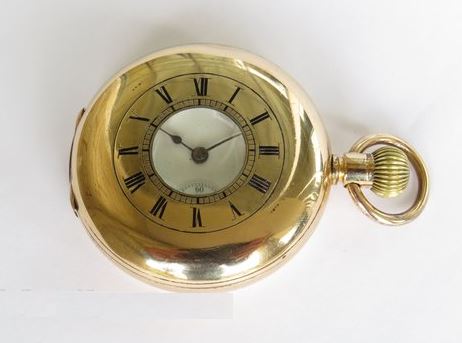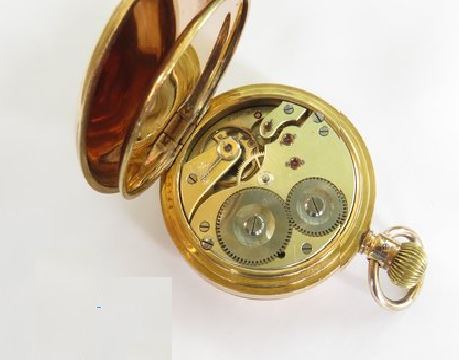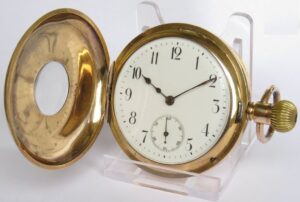Last updated on September 8, 2025
IWC has rarely been featured in any Time Worn Watches post until now. I don’t really know why, the brand is respectable, and they produced good quality watches and still do. I guess they just hadn’t captured our attention the same way as other brands. Anyway, I stumbled across this IWC half hunter pocket watch in recent days and thought I might spend a little time researching IWC.
A brief history of IWC
Founded in 1868 by American watchmaker Florentine Ariosto Jones, the International Watch Company (IWC), launched in the Swiss town of Schaffhausen. Jones sought to combine the advanced manufacturing techniques of American industry with the highly skilled craftsmanship of Swiss watchmakers. This innovative approach, located in a region not traditionally associated with Swiss horology, gave IWC a unique identity. The company quickly gained a reputation for its precision-engineered pocket watches, and later, for its early wristwatches (IWC at Watch Wiki).
IWC is now best known for its iconic Pilot’s Watches and Portugieser collections. The Pilot’s Watches, which have a history stretching back to the 1930s, established a distinct aesthetic of legibility and durability, inspired by cockpit instruments. The famous “Big Pilot” model, with its oversized crown and clear dial, remains a cornerstone of the brand. Similarly, the Portugieser collection, born in the late 1930s from a request for a wristwatch with the precision of a marine chronometer, has become synonymous with elegant, large-dial watches and complex complications like perpetual calendars and chronographs (IWC at Grail Watch Wiki).
IWC calibre 53
The watch has a stem-winding movement, identified as an IWC calibre 53 savonnette (hunter), which is working well. The movement has a serial number, which dates it between 1890 and 1899. The movement is protected by an inner hinged cover (IWC serial numbers at BQ Watches).
According to the Ranfft database, the IWC calibre 53 was produced between 1889 and 1927. It was a savonnette (hunter) Swiss lever movement with 16 jewels, a 30-hour power reserve and a frequency of 18,000 VPH. Additionally, it included a pinned regulator, a bimetallic screw balance with 4 adjustment screws, a Breguet hairspring and a barrel with a Geneva stopwork.
Case and dial
The case measures 50mm in diameter, excluding the winding stem and the loop. The case is gold-plated. There is the occasional mark and a little wear around the edge of the case back. However, for its age, it is in acceptable condition. None of the markings would be considered damage, just merely age-related patina. The serial number inside the case dates it back to between 1890 and 1899. This aligns nicely with the date of the movement. The winding crown pushes in to open the front cover. Inside, there is an acrylic lens which is in good condition.
The enamel dial is in near mint condition. It was deliberately left blank for the original retailer to add their name and address if required. This was normal at the time when retailers effectively posed as the watchmaker. The watch has a special half-hunter hour hand. This allows the time to be read when the front cover is closed. The minute hand is a later addition, which slightly detracts from the originality and authenticity of the watch.
Summary
This IWC half hunter pocket watch is a really nice timepiece. I haven’t had an IWC pass through my hands yet. Nor have I had a half-hunter pocket watch. It was tempting, but I am sure there are better examples of antique IWC pocket watches out there. The replacement second hand is a slight distraction as it takes away some of the authenticity. Admittedly, it is difficult to find truly authentic watches that are over 125 years old. Crystals shatter, hands fall off, dials get damaged. This would have been a nice watch to receive as a gift. However, I will hold out a little longer for that perfect IWC specimen.


